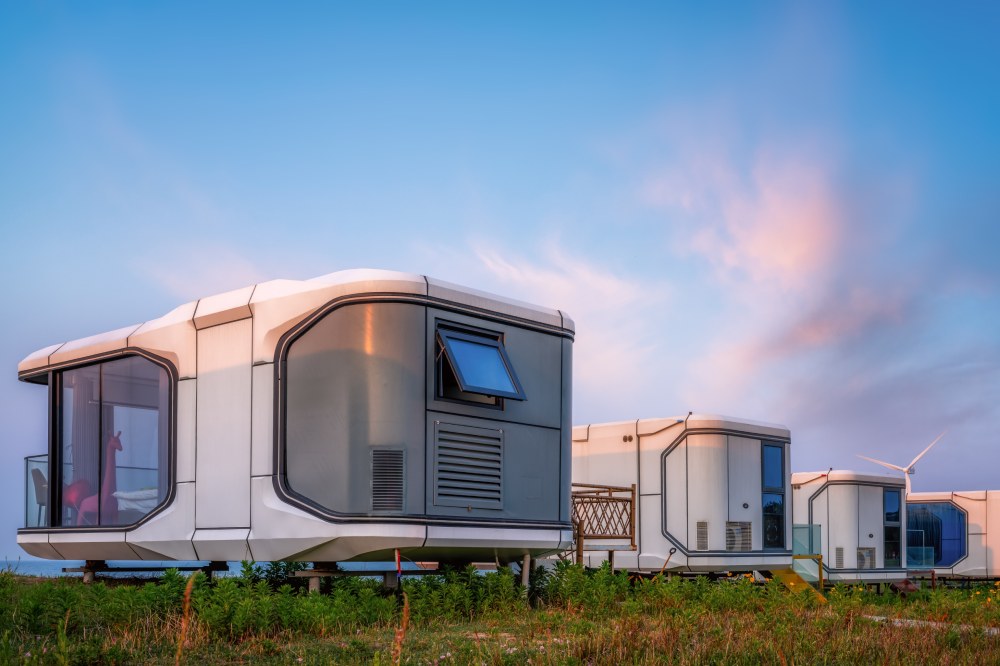Types of living pods to live in while touring

Traveling across the country no longer means sacrificing comfort. Portable living pods are a practical, comfortable alternative to traditional camping and pricey hotels. These pods are compact, towable spaces that include a sleeping area, a small kitchenette, and enough storage space to sustain travelers for a few days. Mobile living pods are easy to manage and set up, helping travelers enjoy their adventure without worrying about where they will live, take breaks, or sleep at night.
Types of living pods
1. Container-based pods
These pods are prefabricated living units built from shipping containers or similar modular shells. The interiors of such containers can be customized to include sleeping areas, bathrooms, and kitchenettes. Movable containers can easily be towed or transported to destinations and set up as temporary homes or workstations. The only significant downside of these pods is their large size.
When choosing movable containers, consider factors such as insulation, ventilation, local regulations, proper management of water, electricity, and waste, and safety standards for extended stays on the road.
2. Off-grid pods
These pods are portable micro-dwellings designed to exist and function without harming the environment. They operate independently and are self-sustaining. Off-grid pods use integrated solar panels, battery storage, efficient insulation, and compact water systems, such as rainwater capture, composting toilets, and filtration, to conserve water and avoid overuse.
They are typically characterized by space-efficient layouts with a bed, kitchenette, and compact bath. Off-grid pods also come with smart controls and energy-saving HVAC to extend autonomy across various climates.
These pods minimize generator use and hookups while ensuring comfort and quick deployment. In that sense, off-grid pods may be less spacious than containers, but they are also slightly easier to live in. They are ideal for touring or remote stops and typically feature 9 to 10 kWh batteries, 2 to 3 kW of solar capacity, and modular add-ons for greater resilience against external elements.
3. Sleeping pods
Sleeping pods are compact, enclosed spaces designed for quick naps or short-term sleep. These pods are easily deployable and mobile, and perform the task they are purchased or rented for with minimal fuss. These are commonly found in airports, offices, and transit hubs. They offer privacy and comfort and typically feature a bed, basic amenities, and ventilation. Travelers and long-distance commuters use sleeping pods to catch some rest between journeys or during intense work schedules.
Unlike the other two kinds of pods mentioned above, sleeping pods lack full living facilities such as bathrooms and kitchens. This makes them somewhat unsuitable for long-distance, long-period touring.
Features of mobile living pods
Before renting or purchasing a living pod, individuals need to ensure that these features are available.
1. Compact kitchenette
Most living pods feature a fully functional kitchenette despite their small size, allowing travelers to cook and eat during their journey. The kitchenette generally features a stove, sink, a small refrigerator, and storage space for some food items.
2. Composting toilets
Ideally, living pods should include a compact bathroom with a toilet, sink, and shower. Generally, off-grid pods use composting toilets and greywater recycling systems.
3. Efficient storage solutions
Living pods offer little space. For that reason, innovative storage solutions such as fold-away beds, built-in shelves, and multipurpose furniture are essential inclusions in these pods.
4. Environmentally sustainable
A lot of living pods are energy-efficient. Travelers can opt for pods that have high-quality insulation, double-glazed windows, and energy-efficient appliances to minimize energy consumption.
5. Renewable energy production and usage
Choosing a living pod powered by renewable energy helps travelers reduce their carbon footprint while touring. They can also look for pods equipped with solar panels or wind turbines, which allow them to generate their own power and live completely off the grid if needed.


